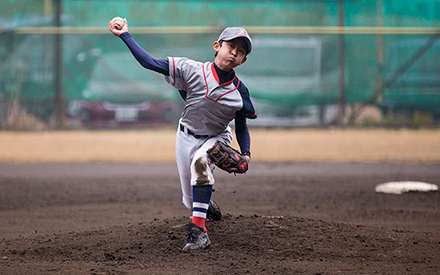
After having a baby, you might want to get back into shape quickly. But it is important to make a slow return to full activity.
Physical activity levels will be different for each woman based on her childbirth experience. Physical therapists work with new moms on how to return to physical activity safely.
According to the Department of Health and Human Services, physical activity during the first year after delivery (called the postpartum period):
- Improves a mother's cardiorespiratory fitness (heart and lung function).
- Decreases postpartum depression.
When combined with a healthy diet, physical activity can help return your body to weight before pregnancy. Keeping a healthy weight reduces the risk of future illness such as heart disease and diabetes.
Follow these tips from physical therapists to prepare for your fitness routine after pregnancy.
1. Take Care of Yourself
You'll need support in the weeks after your baby is born when routines, including sleeping and eating, are changed. During this time, get help with tasks and try to create a routine for sleeping and eating. Avoid lifting anything heavier than your baby. Make sure someone else sets up all the heavy nursery equipment before the baby's arrival. It's important for you to rest and only do light physical activities so your body can adjust.
2. Breathe
Believe it or not, something as natural as breathing will require focus after giving birth. During pregnancy the uterus pushes upward on the diaphragm, which forms the top portion of the core muscles. This changes the shape and position of the lower rib cage and affects how you breathe. A physical therapist can prescribe exercises to help restore your diaphragm and rib cage to their full motion and capacity.
3. Focus on Your Core Abdominal and Pelvic Muscles
A woman's abdominal muscles undergo a great deal of change during pregnancy. Separation of the abdominal muscles, called diastasis rectus abdominus, is common. Starting with the right exercises to strengthen your deep abdominal core at the right time will pave the way for more intense exercises six or more weeks after giving birth.
Soon after giving birth, exercises for the abdominal and pelvic floor muscles can begin. These muscles have been stretched by pregnancy and birth. Strengthening them gives a strong, stable base from which to work and move. This can prevent pain later on. It also makes tasks such as carrying your baby, getting in and out of the car, and lifting and reaching easier. If you've had a cesarean birth, pay attention to any discomfort during abdominal exercise. Pain could mean that you are exercising too soon, incorrectly, or too intensely.
You can begin pelvic floor (Kegel) exercises right away after a vaginal or cesarean birth. Exercising the pelvic floor can help prevent incontinence (bladder leakage) and improve sexual enjoyment. Try doing Kegel exercises a few times daily, even during everyday activities such as feeding your baby.
A physical therapist might recommend several types of pelvic floor exercises that can be performed five to six days a week. Here are two examples:
- Holds. Squeeze, lift, and hold your pelvic floor muscles for five to 10 seconds, then rest for 10 seconds after each contraction. Repeat 10 times.
- Quick flicks. Quickly squeeze, then quickly release your pelvic floor muscles to contract them in a brisk fashion. Relax completely between each “flick.” Do several sets of 10 repetitions to help strengthen your core so it can handle sudden motions like coughing and sneezing.
4. Remember Your Hips
The new demands of caring for your baby (or more than one baby) requires a lot of lifting and bending. Using your hips and legs will help you control your breathing and lessen back strain. Weak hip and buttock muscles are linked with bladder leakage, pelvic pain, and changes in how you walk. A physical therapist can provide you with hip and buttock exercises to strengthen your hips and prepare you for more intense workouts in the future.
5. Every Minute Counts
Over time, increase your physical activity and add exercise to your everyday routine. Exercise can include walking or taking a fitness class. Remember to go at your own pace. Try increasing your activity by five to 10 minutes every one or two weeks. Make sure you pass the "talk test" during exercise, meaning you are not too short of breath to be able to carry on a conversation.
Regular physical activity can benefit your physical, mental, and social health, and prevent or improve many chronic (long-lasting) conditions, such as heart disease, diabetes, obesity, depression, and some cancers.
Start with a warmup for five minutes and increase your exercise intensity to where you can talk but not sing. Then cool down for five minutes. If you choose walking, start with a short loop that you can repeat many times. This will allow you to rest or end your walk when you want. Carrying your baby in a harness or pushing a stroller requires more effort, so consider this when planning your activity.
If you have trouble getting back to full function after giving birth or have other physical problems related to pregnancy, a physical therapist can help.
Physical therapists are movement experts who improve quality of life through hands-on care, patient education, and prescribed movement. You can contact a physical therapist directly for an evaluation. To find a physical therapist in your area, visit Find a PT.


